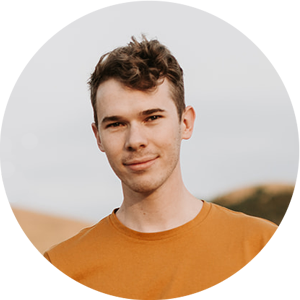

I'm a recent graduate from the University of Utah, studying Technical Art and Design in the Entertainment Arts Engineering program. I have experience in game and level design, 3D modeling, riggin, animation and programming.
I'm passionate about all aspects of game development and I'm constantly looking to improve and expand my skill set. Nothing gives me a bigger rush than solving a difficult problem, or creating something surprising and original.
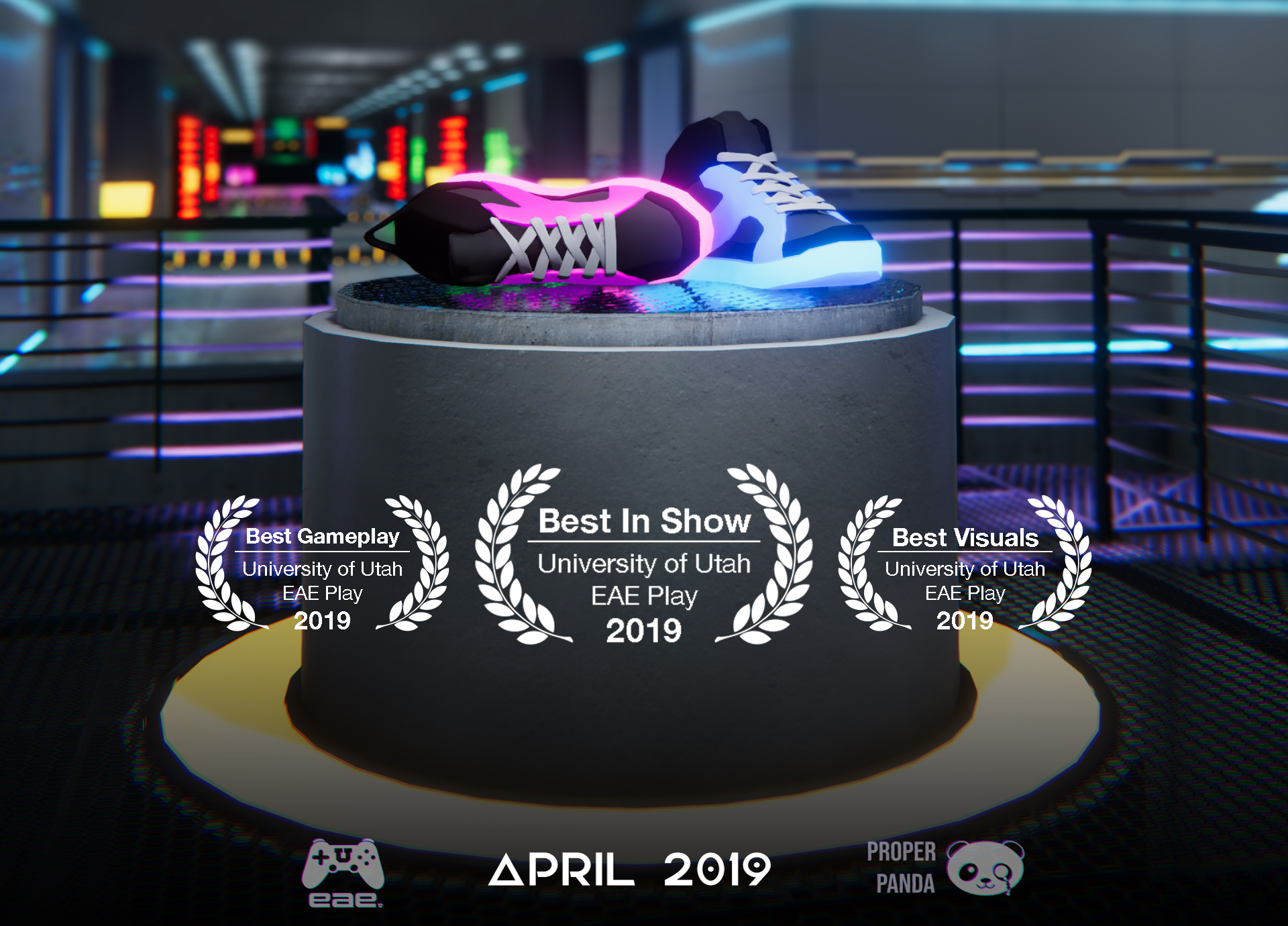
Lead Designer, VFX Artist, User Researcher
For this project I took the lead in team decisions concerning game design.
I also concentrated on learning Unity’s Visual Effects Graph and Shader Graph to create the VFX and various shaders for our game.
Designers: Kendal Kotter, Breanna Harami
Artists: Doug Hawthorm, Sam Vasquez, Breann Evans, Khiem Le, Jordan Williams
Engineers: Sierra Volker, Johan Vischer, Rong Xiao, Michael Sorger
In Neon Kicks, you’ll take down a border wall or die trying. Using teleporting light-up shoes, shut down as many of the border wall defenses as you can. Neon Kicks is a fast-paced obstacle runner, where players must navigate deadly traps, guard drones, and other hazards in order to shut down sections of a massive border wall at a time. Neon Kicks was released in April 2019.
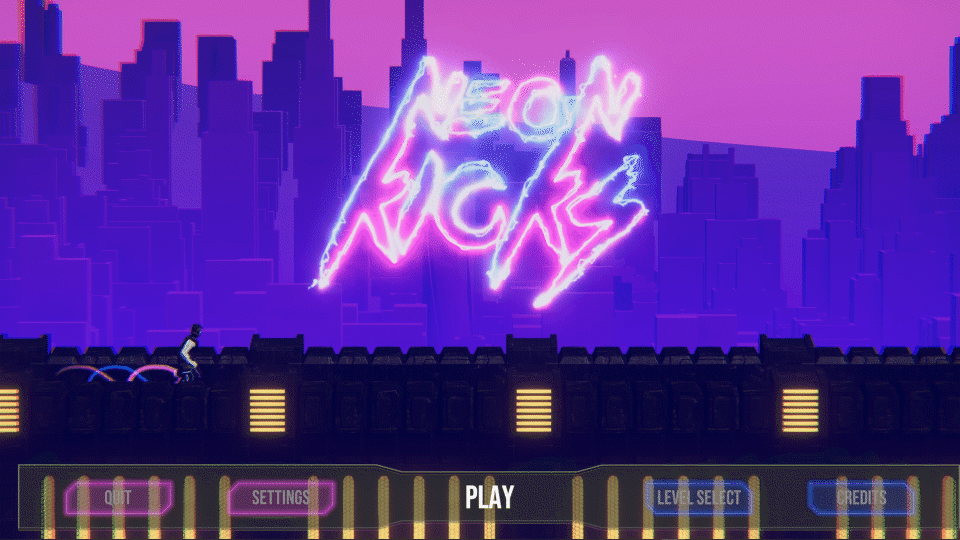
This project took several major turns right at the beginning. What started off as a suspenseful horror game quickly shifted to a mix of puzzler and speedrunner. The razor-pitch we settled on was “Metal Gear Solid meets Oceans 11, with gameplay that swings between stealth-based puzzles and high-octane escape”. This idea lasted for two or three months before our user research persuaded us to trim back our game into something more refined.
Our game originally aimed to please two groups of players. The first were puzzle game enthusiasts, like Mollie, looking for a mentally challenging experience. The second audience was fans of speedrunning and action, like David. As a result, our game ended up being two games mashed into one. This of course would cause major issues later down the line, but we were blissfully unaware of them at the beginning of our development.
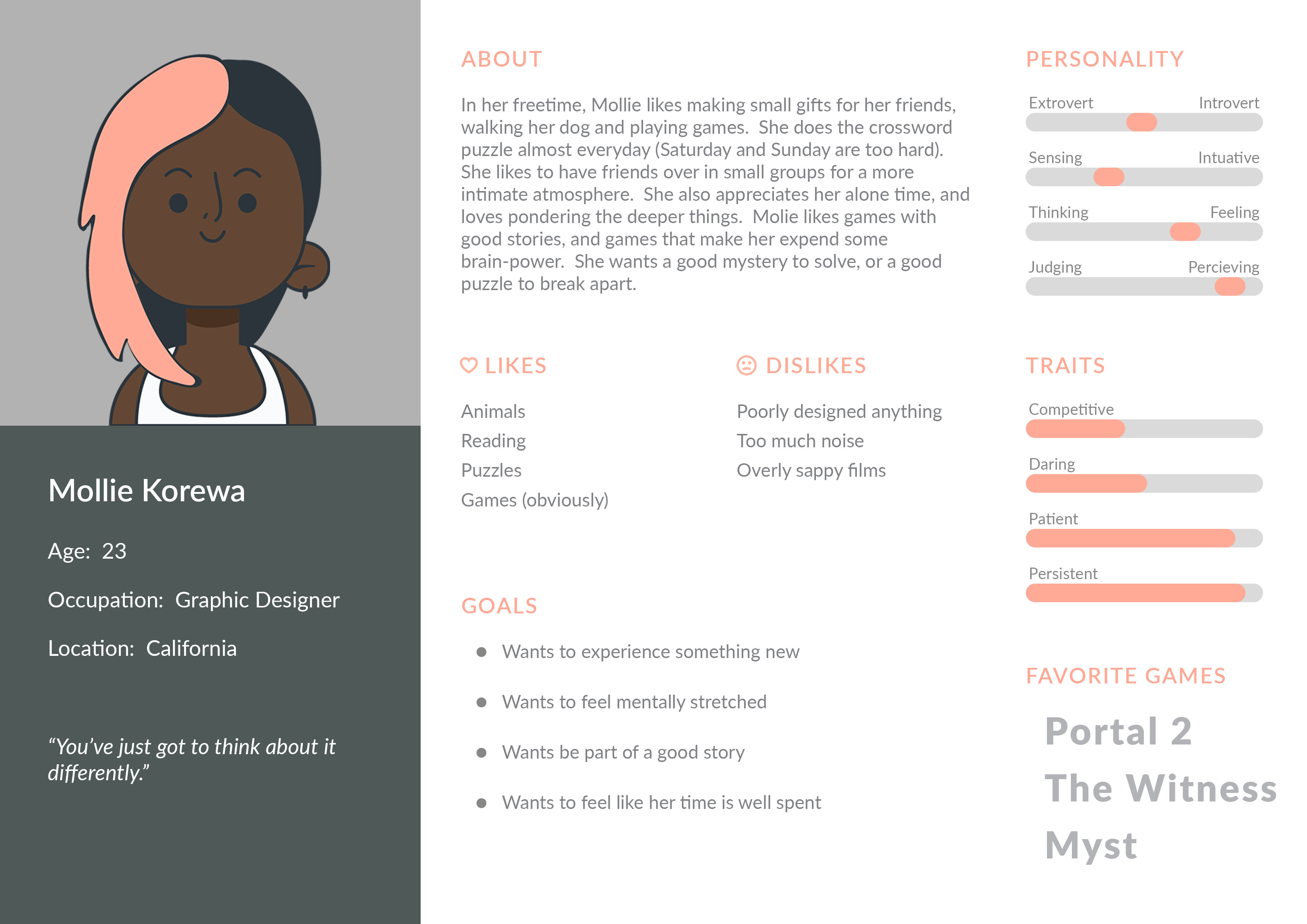
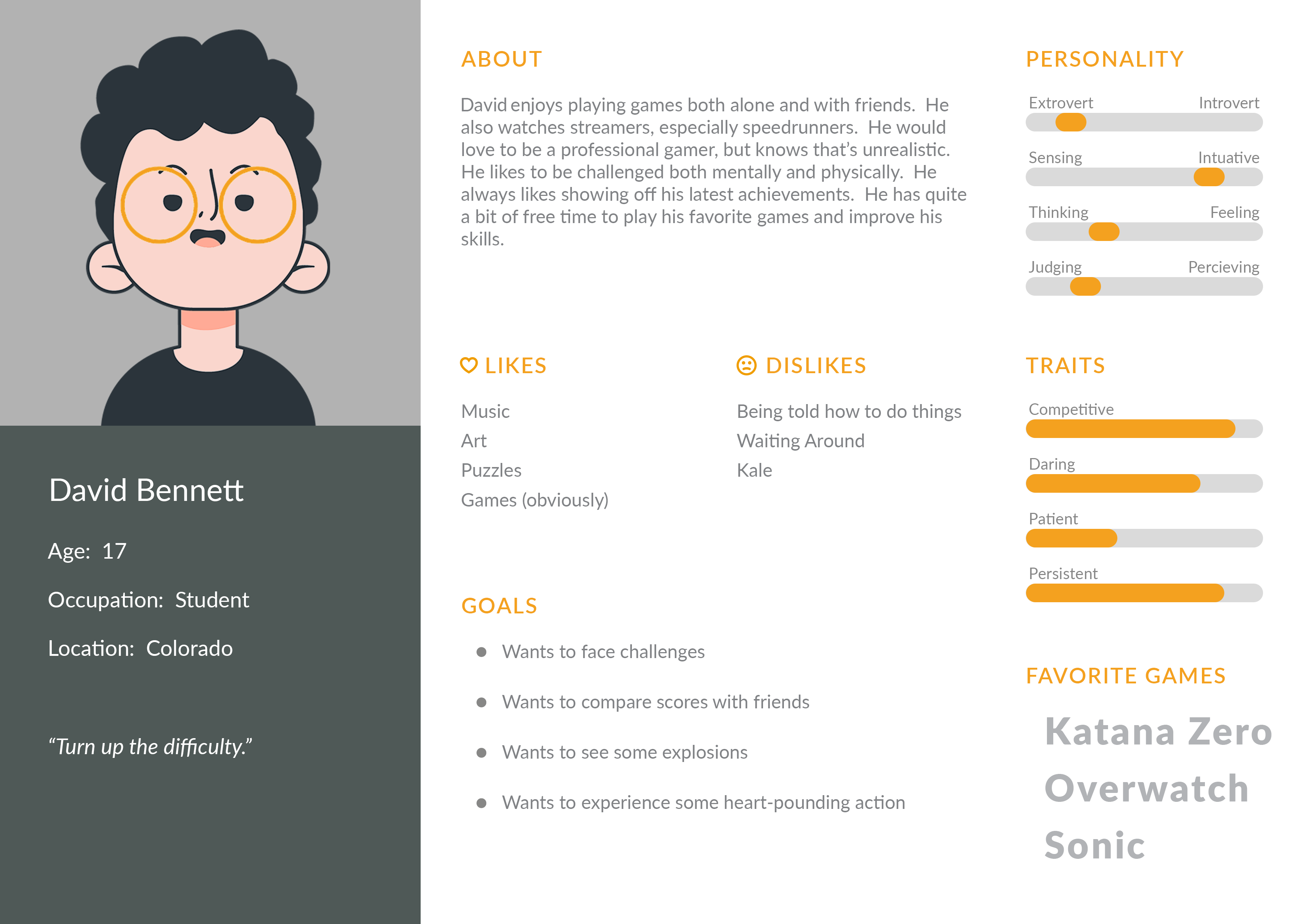
After creating our initial game idea, we conducted a series of surveys with people who fit our core audience. The focus of these surveys was to find out what our audience was looking for in a stealth game. Since stealth would be the core of our game, it seemed only logical to start there. The results of these surveys gave us a strong direction for our game. We knew what players would be looking for from a stealth/puzzler experience. So we got to work and quickly built a working prototype with all the desired elements.
Neon Kicks was a challenging game to make in regards to scope. Given that it was our capstone project, we only had two semesters to work on it, which really turned out to be more like 6 months. During that time everyone on our team was taking other classes and most of us had jobs, so the actual working time to make Neon Kicks was severely limited. This lack of time forced us to cut out large parts of our game and turn it into something more refined. What started out as two games stitched into one quickly became only one cohesive experience.
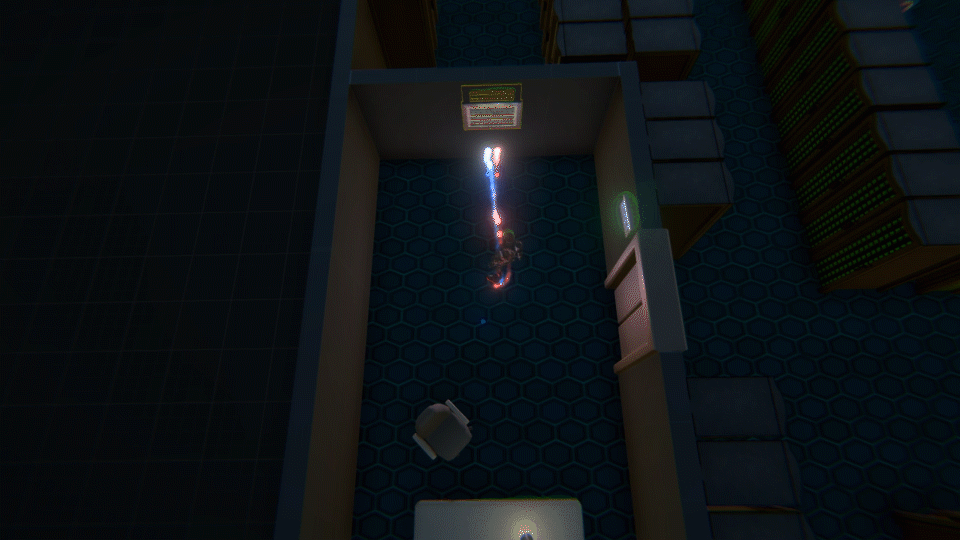
We originally targeted two audiences with our game, as shown above. These audiences were very different, however, and we quickly came to realize that with our limited time we would have to pick only one audience to design for. At first we were leaning toward the stealth/puzzle based audience. After several rounds of playtesting, however, we found that players had more fun using the core mechanic to go fast and dodge obstacles. This led us to cut the stealth aspect of our game, and concentrate on speed and action.
Another large obstacle we faced was the tech we decided to use. We knew we wanted our game to look clean and futuristic, and so we decided to use Unity's newly released HDRP setup. As this setup was still in beta at the time, this decision led to a lot of trial and error. It also meant I had to learn to use the Shader Graph as well as the Visual Effects Graph and the new particle system flow. While the use of Unity's beta technology meant a lot of extra bug-fixes on our part, it was worth the effort and we all learned a lot.
After many debates in our team, and several rounds of user research, we decided to design our game around the idea of going fast and avoiding obstacles. Our core mechanic of kicking the character's shoes and teleporting to them lent itself well to this type of gameplay. Players are forced to make quick decisions about the path they will take. Taking too long puts the player in danger, whether it be falling floors, crushing walls, lasers or evil flying drones. We found that players really enjoyed this gameplay. It offered just the right amount of difficulty, while still being relatively simple to master.
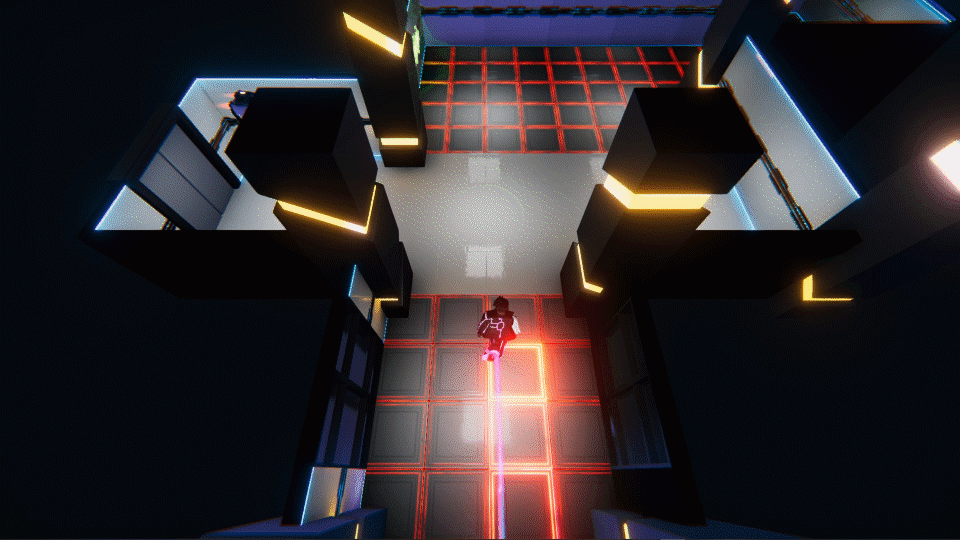
Here you can see our falling floor obstacles, as well as an attack drone, in action.
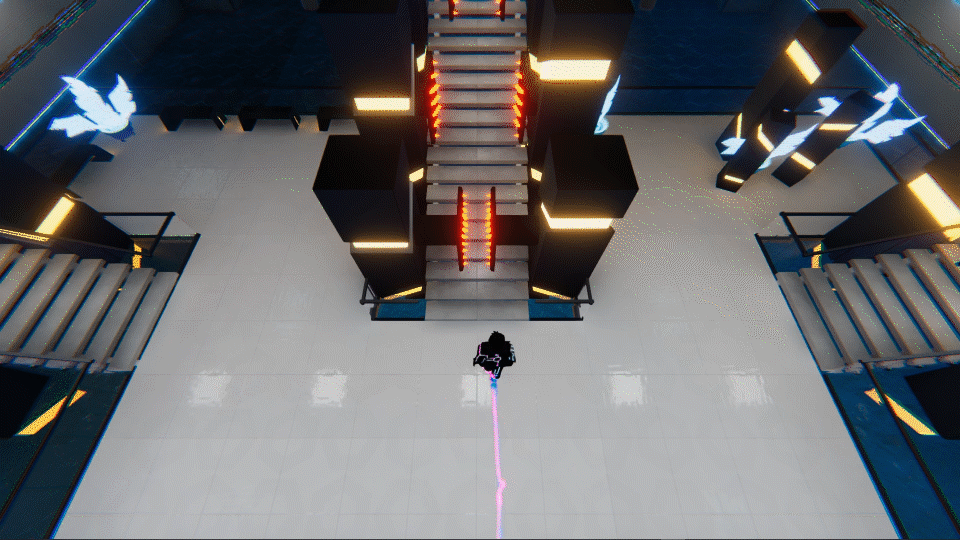
And here are our crushing walls. All of the deadly obstacles in the game are in neon red so players can easily identify the danger.
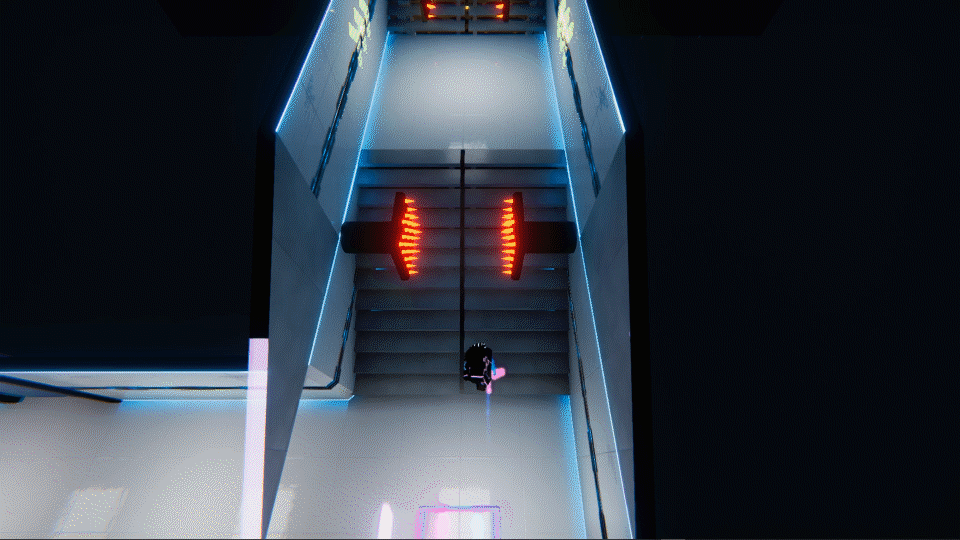
Every year the University of Utah holds an end-of-the-year where students from the EAE program show off their games. This includes both undergrad and graduate students. In 2019, the year we made Neon Kicks, the U of U invited industry professionals to come and judge the games. Our team ended up winning Best Gameplay, Best Visuals and Best In Show. We were all surprised that our undergrad game had impressed the judges, but we were gratified to know that our design choices paid off. I think we went out with a bang.
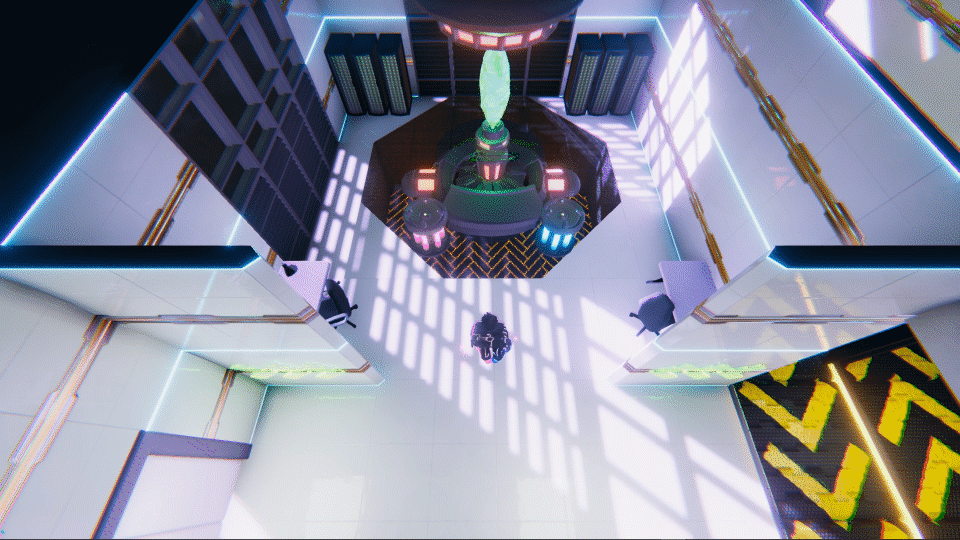
This project opened my eyes to a lot of the difficulties of creating a game from the ground up with the intent of publishing it. I’ve worked for well-oiled studios, and on other small personal projects, but this game was a different beast. Starting from scratch meant we had to define our own pipeline for everything from asset creation to code sharing. Things were further complicated by our use of new, largely untested, technology. The lack of extensive documentation, and the beta nature of these tools made them difficult to learn, but I now feel fairly comfortable with both the Unity Visual Effects Graph and Shader Graph. We also had to decide on our roles as a team. Luckily we had a great team and we were all able to work well together, melding our different opinions into something great.
For this project I worked as the Design Lead. This meant I was in charge of heading up discussion about the design of our game, from mechanics to level designs and everything in between. It was an engaging task, and I really enjoyed it. My job was made a lot easier by my great teammates, who all helped refine our designs and really brought our game to life.
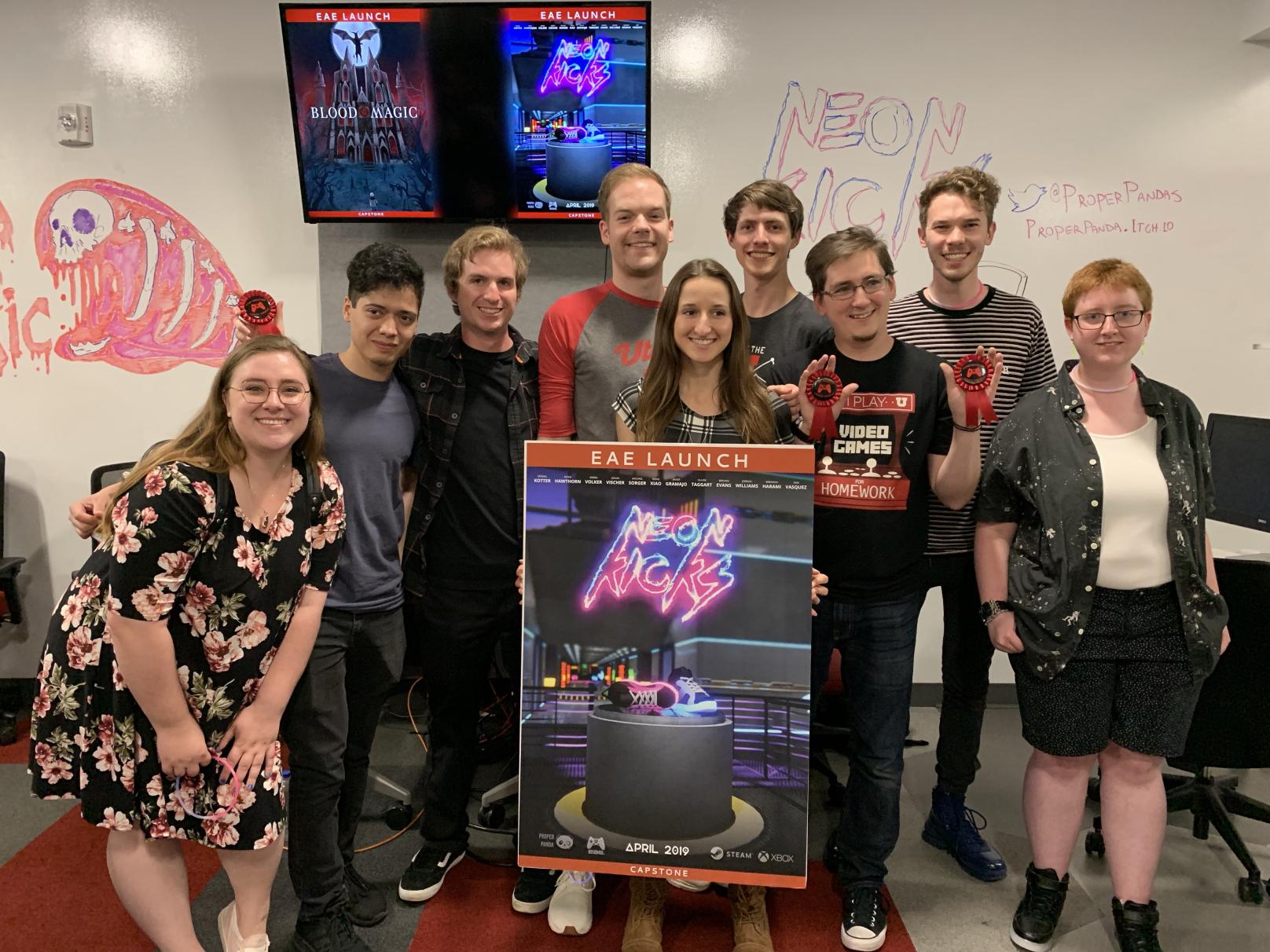
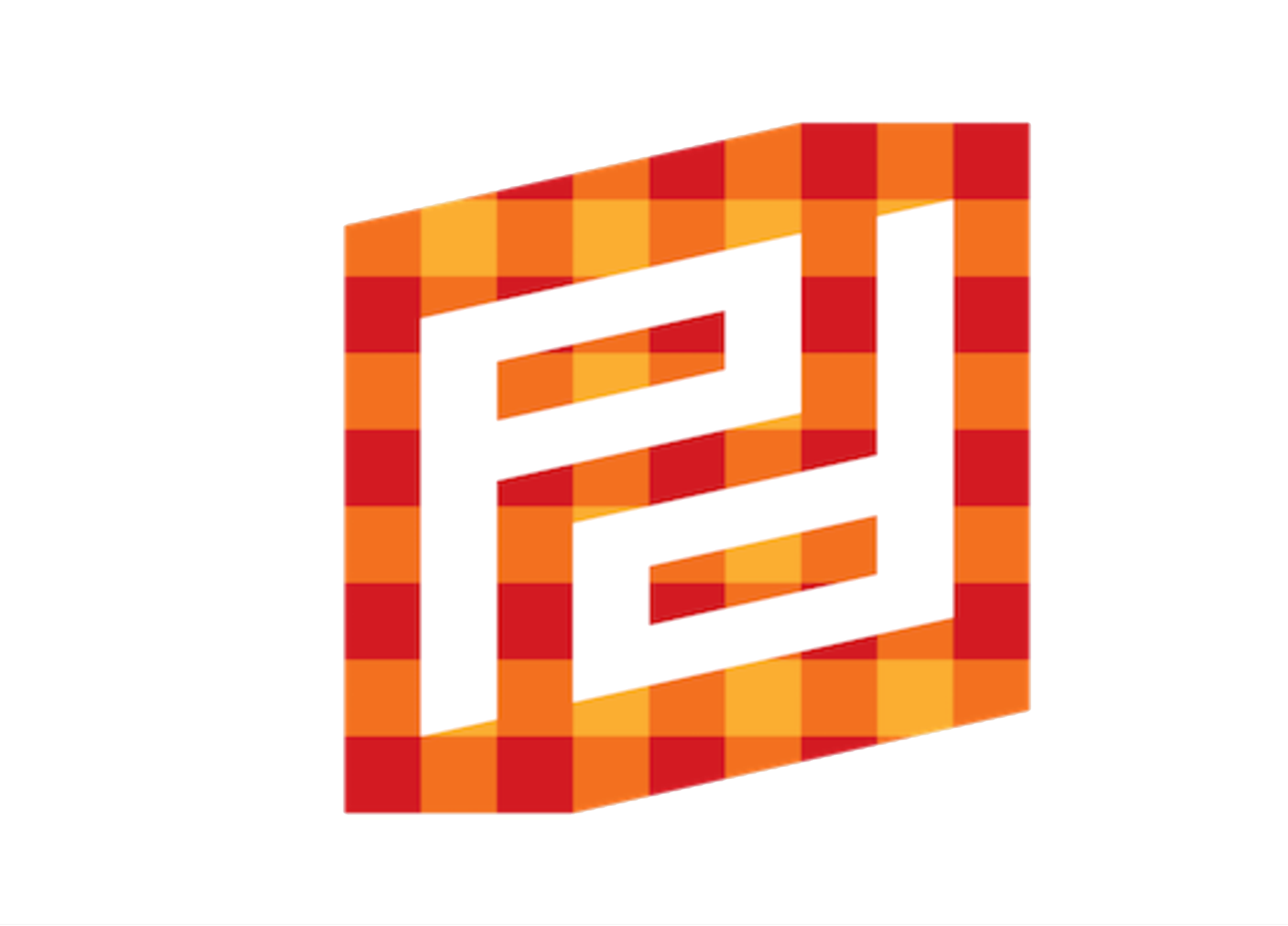
Associate Game Designer
For this project I was tasked with designing a series of 4 player competitive minigames for a mobile game.
I was also tasked with helping to create the initial designs for our currency, leveling and MMR systems.
I also had the opportunity to work on designing a list of possible events to keep our players engaged post-launch.
CEO:Joel Seligstein
Studio Director:Randall King
Lead Designer: Evan Orton
Artists: Toph Gorham, Dylan Wignall, Jeff Jackman, Matthew Barnes, Scott Hennessy
Engineers: Michael Holt, Johannes Vischer, Colter Cvach, Nathaniel Ellingson, Garin Richards
This particular project is still under development, so I can't reveal too much about it. I can tell you, however, that it's a multiplayer mobile game. Instead of sharing exactly what I did, I'll focus more on what I learned from the process. I'll also talk about whatever initial design elements I can.
I was tasked with helping to design the first pass of our XP, leveling and reward system. The main challenge of designing this part of our game was trying to balance the time it would take to level up with the reward of leveling up. We wanted to keep players invested, but wanted to avoid forcing players to grind for rewards, or move up the reward ladder too easily. After starting with a base XP-reward, it was simple to calculate the amount of time needed to reach a certain level. After looking at games such as Clash Royal and Overwatch, we decided on a leveling curve that seemed to strike the right balance. We then placed rewards along that scale that would keep players coming back to our game regularly. We also designed our scale to provide players with an exciting and rewarding first play session. The action starts right when a player first opens our app. Below you can see the result of this first design pass.
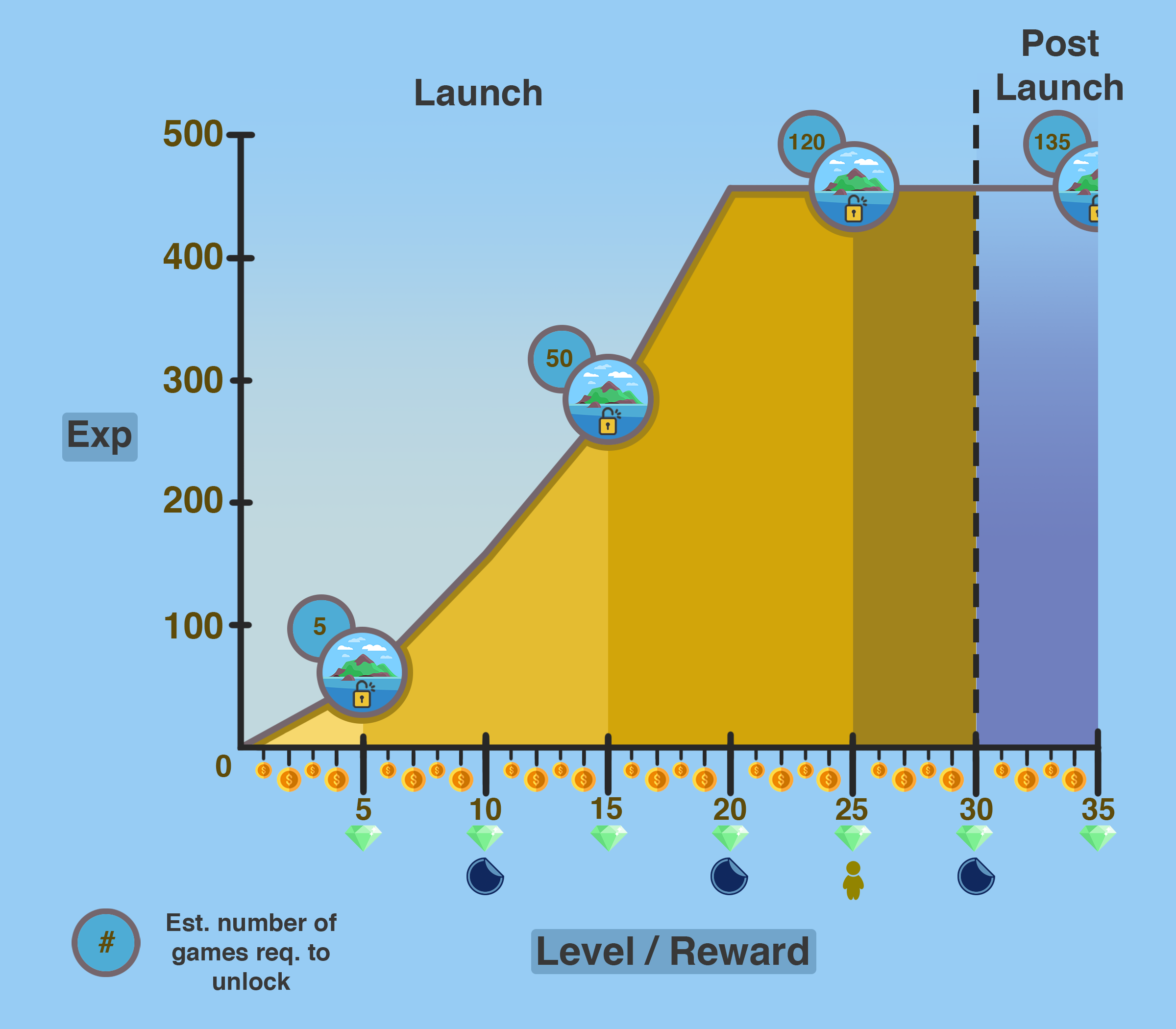
One of the best ways to increase player satisfaction and interaction is the use of periodic events. As part of my internship at Parallel Plaid, I helped brainstorm a series of possible events we could use in our game.
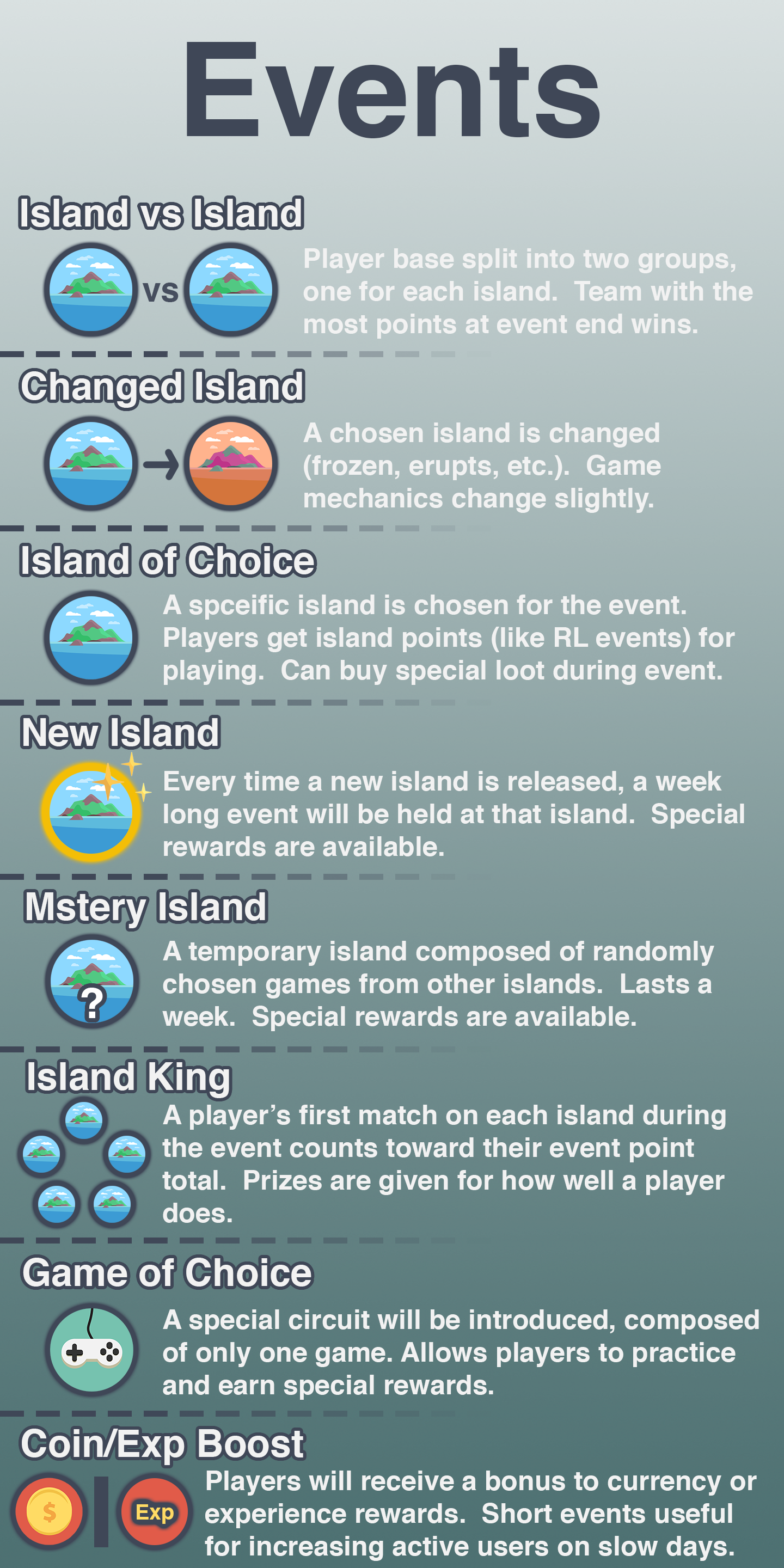
This game is comprised of a series of small areas, each with a distinct theme. On launch there will be 4 or 5 of these areas. I was tasked with leading the design of one of these areas. Although I can't discuss the final designs, below are two of the early design boards I created. The central theme of each area was open to a wide range of options, so I had a lot to play around with. I think the ideas we eventually landed on are extremely fun.

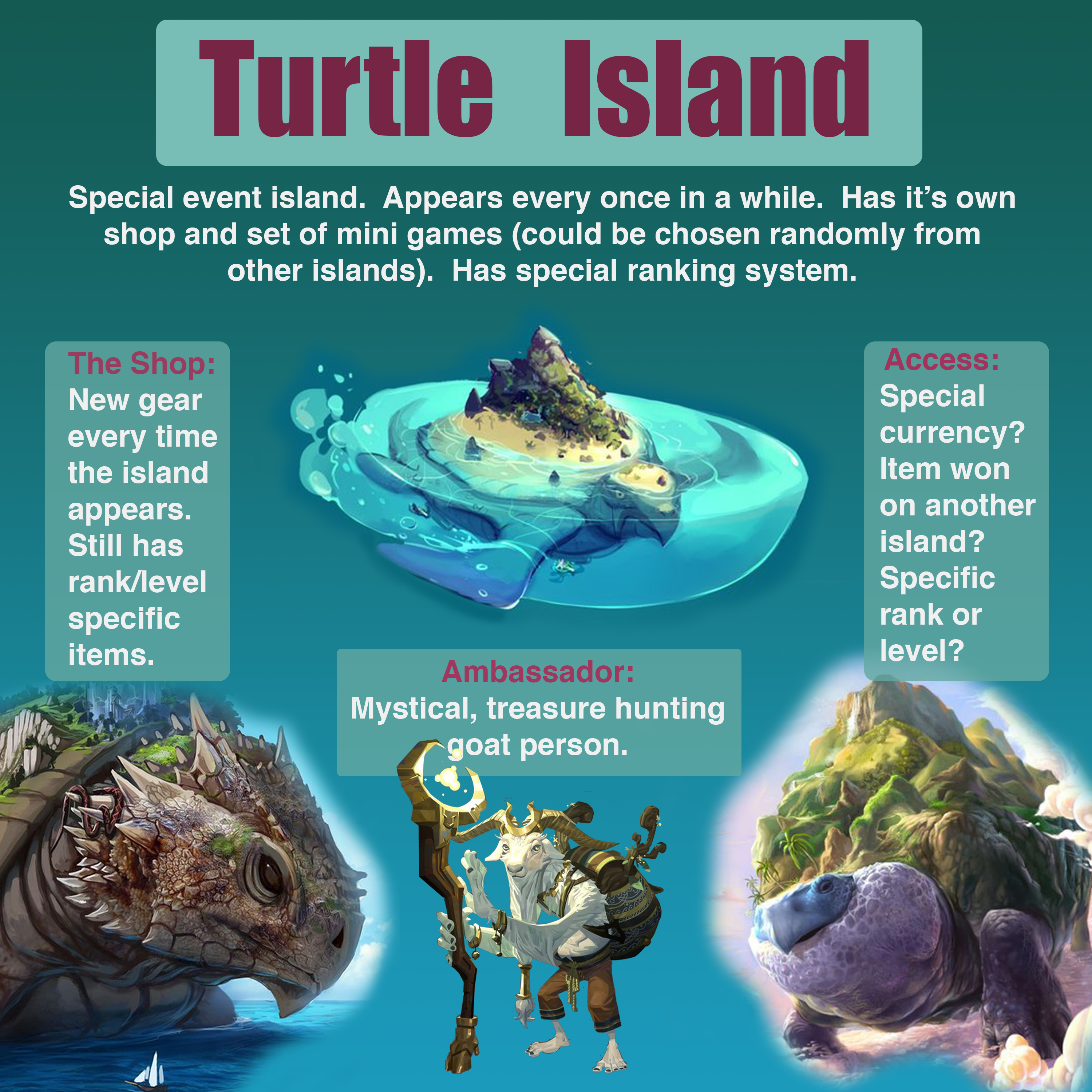
I also created a very rough outline of a possible clan system. This system was inspired by games like Kingdom of Loathing and Clash of Clans. Clans would provide a place for players to connect with each other. A clan would also provide players with a rewarding use for their various currencies.
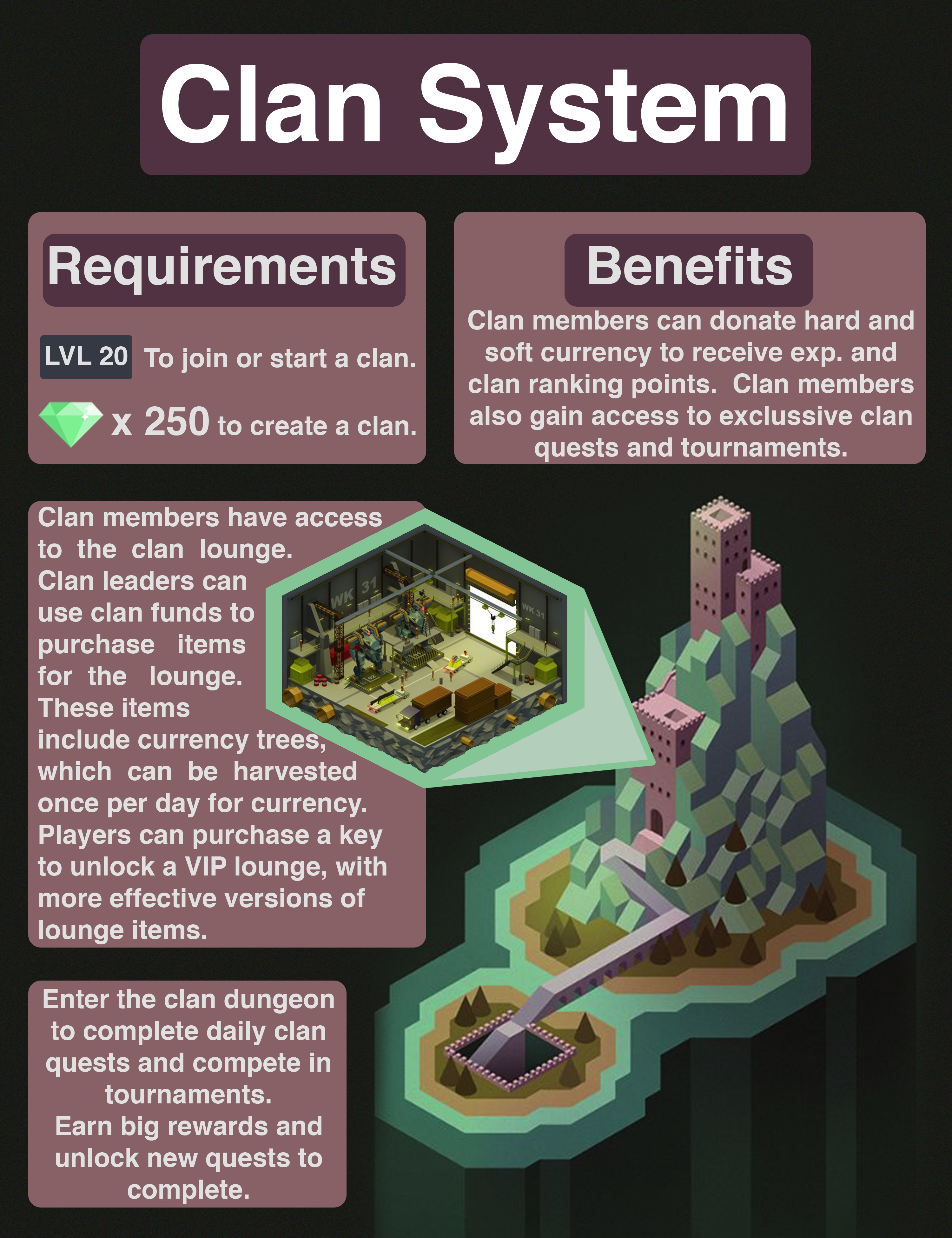
This project was all about quick iteration and improvements. More than any other project, the process of designing this game taught me to work with peer critiques and not get attached to what I create. Most, if not all, of my designs were drastically changed by the time I left the project, but that's a good thing. I loved working in this fast paced and iterative environment.
This was my first time working on a mobile game, and it allowed me to work on a lot of unique design problems. Mobile games are all about repeated, small play sessions. Each element of our design had to be focused on providing our players with that experience. If any piece of our game was too time consuming, players would lose interest, or not even have the time to interact in the desired manner. Mobile games also need to be simple and readable. Overcomplicating our game systems would lead to confusion, and a decrease in our player base. Every menu and instruction needed to be clear, concise and simple. This forced us to trim down a lot of our initial designs, resulting in a more lean and polished end product.
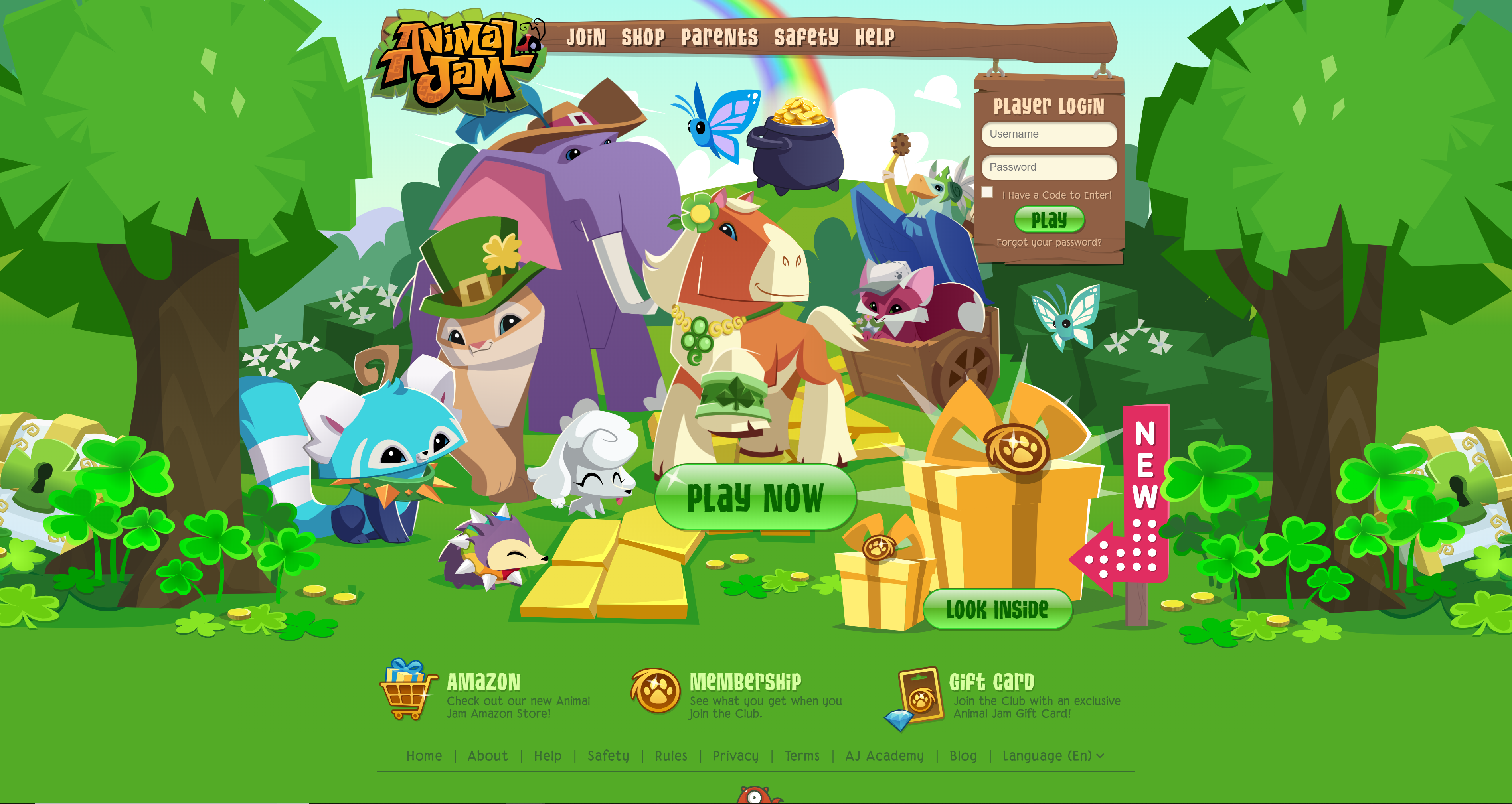
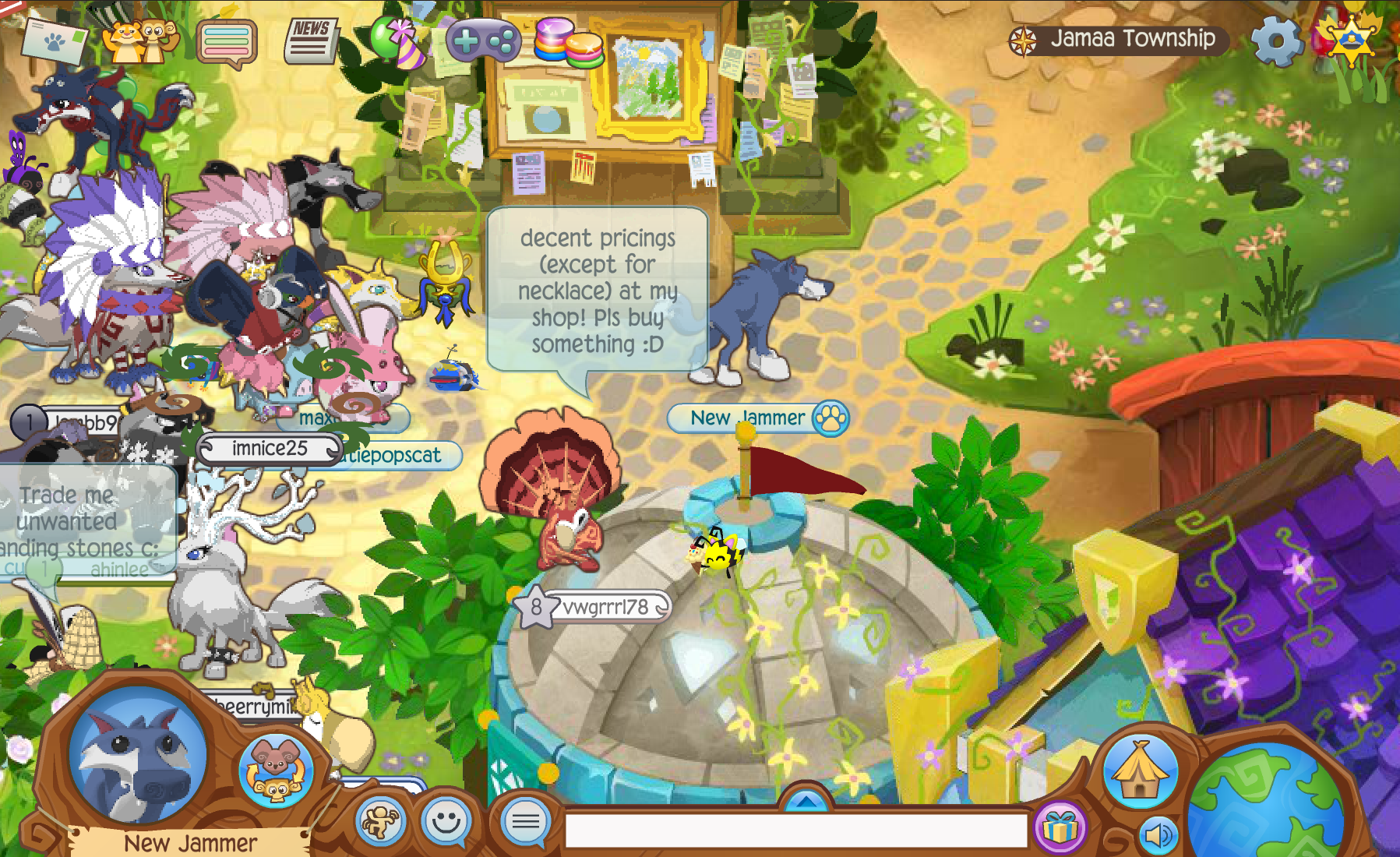
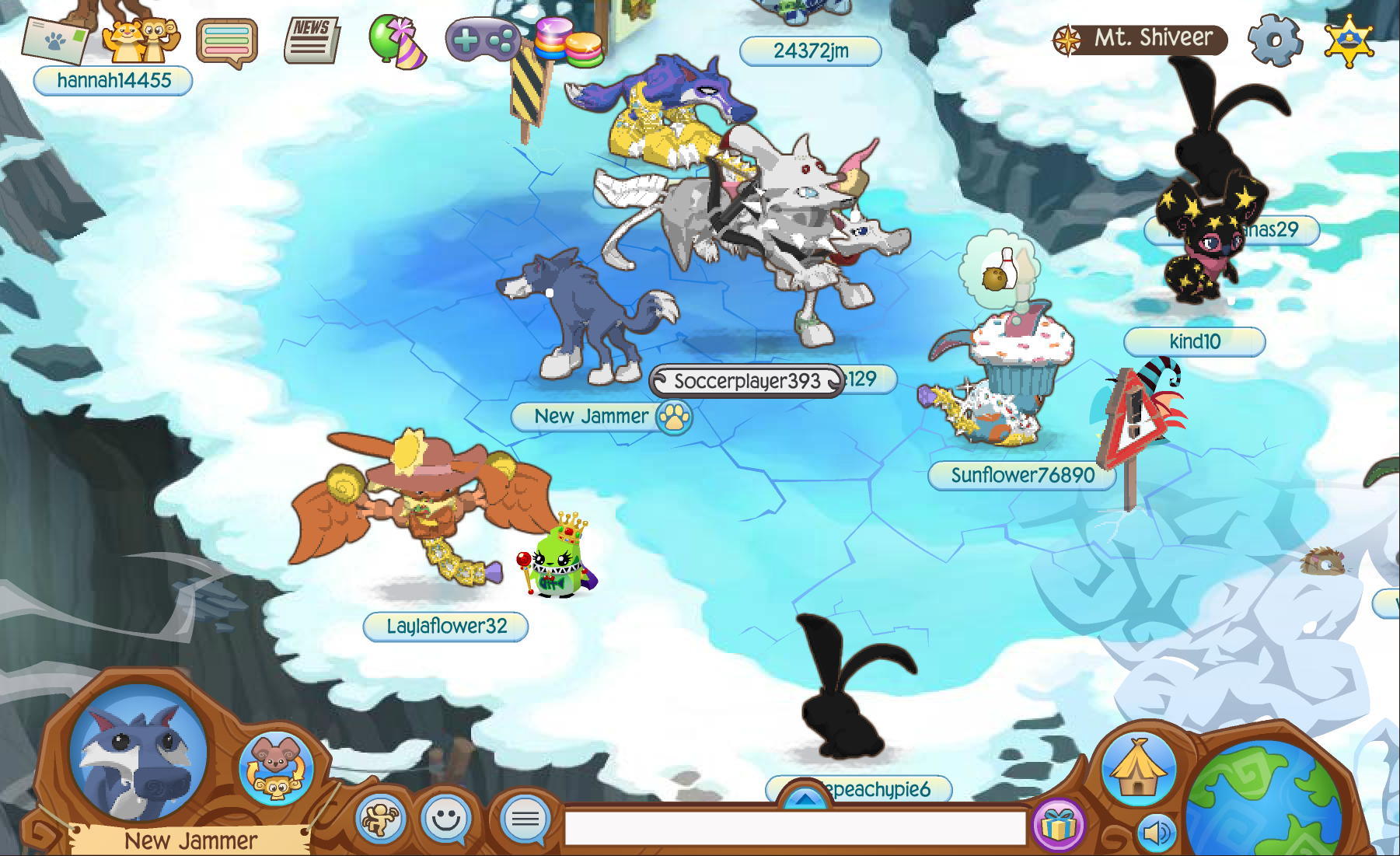
Animal Jam is an educational MMO for kids with millions of active users. Animal Jam focuses on enabling and encouraging the creativity of its players through in-game roleplay and story crafting.
Animator, 3D Modeler
I animated hundreds of accessories for each of the 50 playable animals. I also modeled several accessories, custom fitting them to each of the animals.
At Wild Works I developed an eye for detail and timing. Although the accessories are small on the player’s screen, a good animation brings life to a scene. I prided myself on working quickly while still producing exciting and interesting visuals.
Check It OutWasteoids is a 2D couch competitive shooter. Duck Game meets Splatoon in the post-apocalypse.
Lead designer, Tech artist, 2D artist
This was a fun project to work on. In our team of 3 I took the lead when making design decisions. Wasteoids has some fun, unexpected mechanics that make it a blast to play. I also took the lead with level design. Creating competitive and fair 2D levels was a fun challenge. I also helped create some of the art for our game, and was in charge of creating and managing our animation systems.
This project was completed with a team of 3. I love working in a small team because it allows me to learn new skills and contribute in multiple ways. I learned a ton about making a 2D pixel art game and the amount of time that requires. I also became very experienced with Unity's animation controller system.

Lorem ipsum dolor sit amet, consectetur adipisicing elit. Mollitia neque assumenda ipsam nihil, molestias magnam, recusandae quos quis inventore quisquam velit asperiores, vitae? Reprehenderit soluta, eos quod consequuntur itaque. Nam.
Close Project